Sauce Boat & Ladle, Somerset County
From the USS Maryland Silver Service
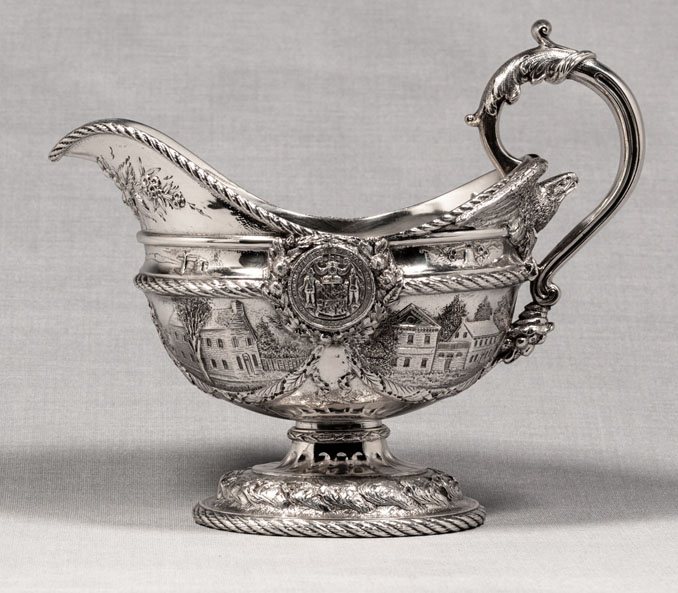
Maker: Samuel Kirk & Sons (1815-1979)
Objects: Sauce Boat and Ladle, Somerset County
Date: 1906
Medium: Sterling Silver
Dimensions: Sauce boat: Overall height, 7"; Overall width, 7 3/4"; Overall depth, 4 1/4"
Dimensions: Ladle: Overall length, 8 1/8"; Overall width, 2 1/4"
Accession number(s): MSA SC 1545-0935-1 (boat) and MSA SC 1545-0935-2 (ladle)
The USS Maryland silver service includes a pair of sauce boats and ladles representing Wicomico and Somerset Counties. Somerset County was created by an Order in Council in 1666 and named for Lady Mary Somerset, daughter of Thomas Arundell of Wardour, and sister of Lady Anne Arundell, wife of Cecilius Calvert, Second Lord Baltimore.
While the seven scenes on each sauce boat are unique to that particular county, the overall appearance of each piece is identical. This sauce boat is decorated with scenes that relate to the early history of the city. Each piece has four main scenes that are separated by festoons of tobacco leaves, while the “border of progress” surrounds the upper portion of the bowl. The Great Seal and the Cruiser are each surrounded by sprays of native trees. The handle terminates in a cornucopia, while an eagle in relief extends out of the upper portion. Oyster shells around the base connect the pieces to the Eastern Shore, and the rope borders symbolize the nautical theme of the service.
The handle of the ladle is formed from a reproduction of a “crownstone” marker of the Mason-Dixon Line. These large limestone markers were placed every five miles along the Mason-Dixon Line, and were decorated with the coats-of-arms of Maryland and Pennsylvania.
Visible scenes (left to right, top to bottom):1. First Telegraph Set (number 96)
The original transmitting and receiving sets are now at the Smithsonian Institute and are also depicted on the pieces from Baltimore City and Baltimore, Calvert, Charles, St. Mary’s, and Wicomico counties.
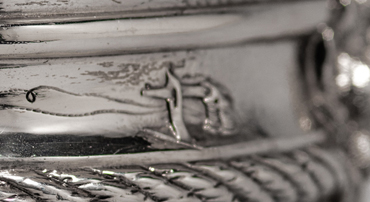
3. Cokesbury Bell (number 95)
In 1888, the historic Cokesbury Bell was transferred to Goucher College, then in Baltimore City, and it remained with Goucher College until 1959 when it was presented to the Wesley Theological Seminary in Washington, D.C. The bell is also depicted on the pieces from St. Mary’s, Wicomico, and Charles counties.
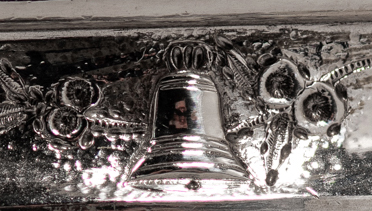
4. Courthouse at Princess Anne (number 92)
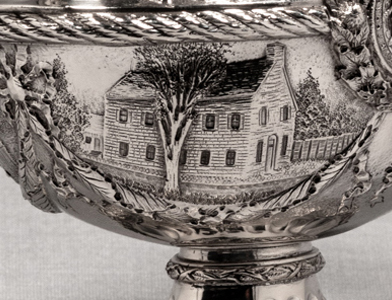
5. Westover (number 91)
The house fell into disrepair in the late nineteenth century, and subsequent owners of the house demolished its ballroom wing and other dependencies, and all of the above-mentioned outbuildings. A view of the home as it was in the mid-19th century is depicted on the sauce boat.
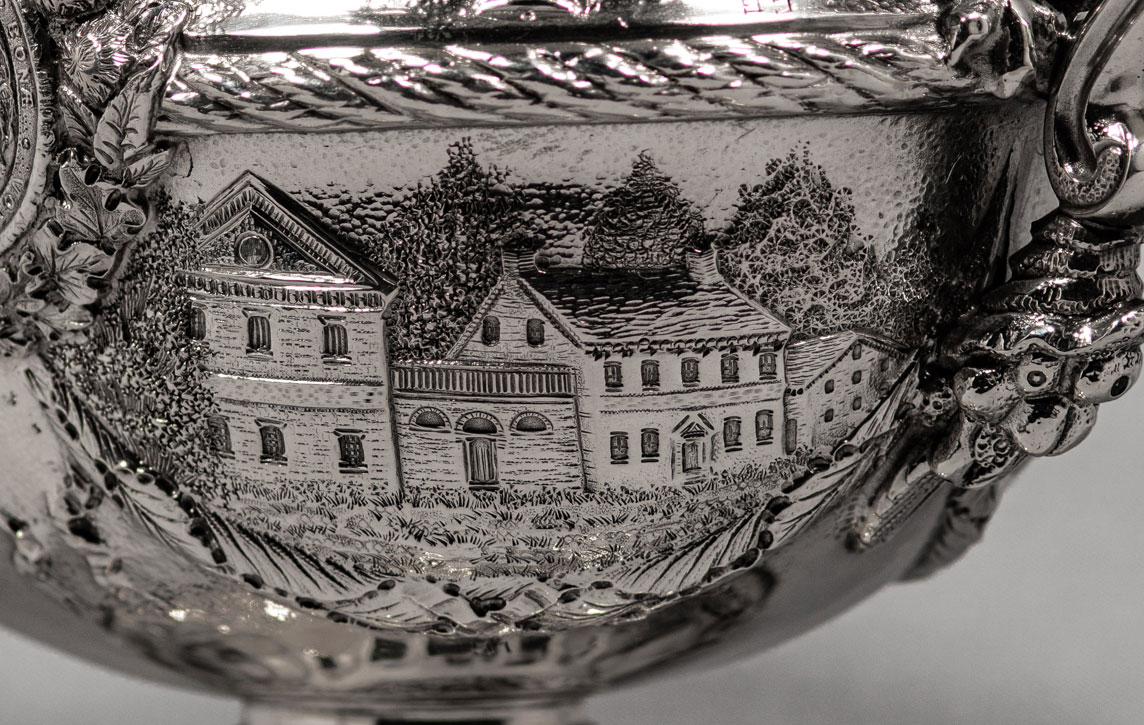
Scenes on the reverse (left to righ, top to bottomt):
1. First Steel Pen (number 94)
Peregrine Williamson, a jeweler from Baltimore, wanted to have a more durable writing instrument than the typical quill pen. He started testing designs in 1806 and by 1808 felt so confident in his pen he sent some as a gift to President Thomas Jefferson. In 1809, he was granted the first patent for a metallic pen and, in 1835, he was granted a second patent for an improved metallic pen. While Williamson’s original patent was lost in a fire, this depiction is based on one of his early pens held in the collection of the Maryland Center for History and Culture.
The first steel pen is also depicted on pieces from Charles, St. Mary’s, and Wicomico counties.

3. First Telegraph Set (number 96)
The original transmitting and receiving sets are now at the Smithsonian Institute and are also depicted on the pieces from Baltimore City and Baltimore, Calvert, Charles, St. Mary’s, and Wicomico counties.
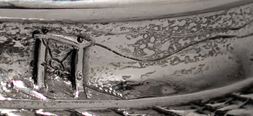
The Teackles referred to the mansion as “Teackletonia” and it was added to the National Register of Historic Places in 1971. It is now the home of the Somerset County Historical Society.
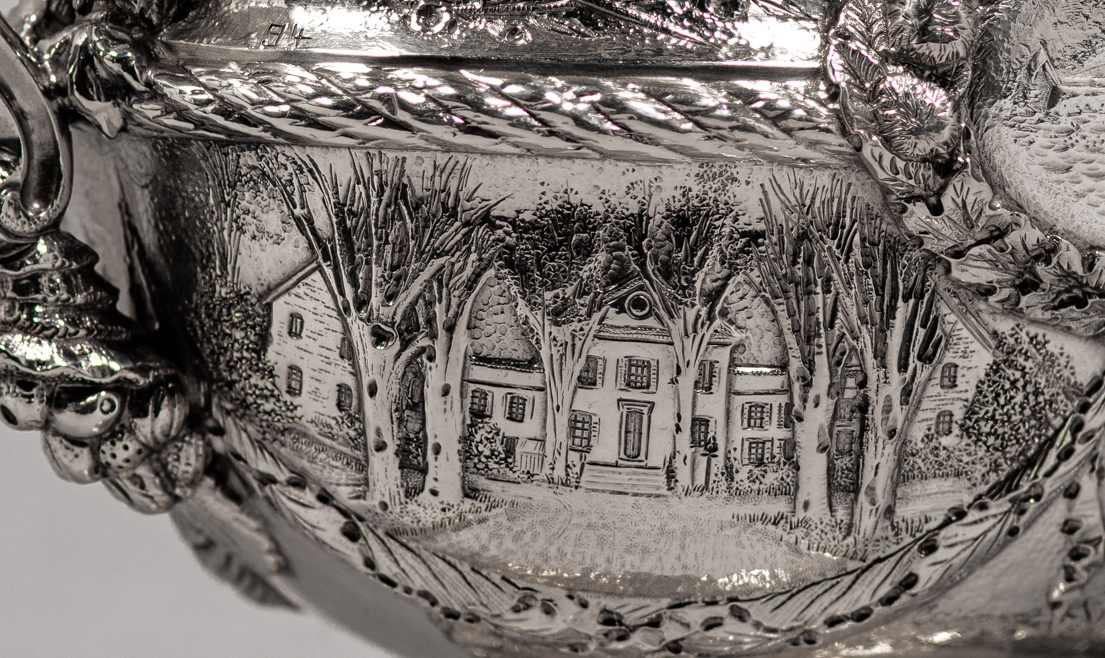
|
This web site is presented for reference purposes under the doctrine of fair use. When this material is used, in whole or in part, proper citation and credit must be attributed to the Maryland State Archives. PLEASE NOTE: The site may contain material from other sources which may be under copyright. Rights assessment, and full originating source citation, is the responsibility of the user. |
© Copyright August 07, 2024 Maryland State Archives
